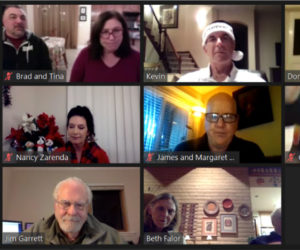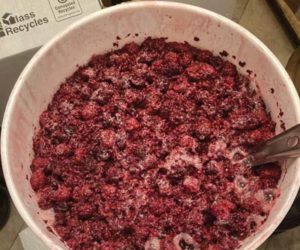
There you’ll find Maiolini Vineyards, among others. Head winemaker Steve Maiolini’s been in the industry since 1993 and makes Petite Syrah and Sangiovese in addition to his favorite style, Zinfandel. He uses grapes from Napa Valley, and his wine is probably most recognizable by its label, which features a little pig motif (Maiolini means little pig in Italian). His wine has won awards, and he’s been involved with the Zinfandel Advocates and Producers (ZAP) since 1994. So what makes his wine any different from the others that will be poured at the ZAP Annual Zinfandel Festival in January?
He’s a home winemaker.
This year’s rendition of the Zinfandel Festival will be held in San Francisco between January 26 – 29, 2005. There are four days of events, culminating in the week’s finale – the 14th Annual Zinfandel Tasting.
How big is the festival? Well, for starters, organizers expect 275 wineries to be involved and 10,000 attendees for the festival, which traditionally sells out. In addition, because of Zinfandel’s historical significance in California, San Francisco Mayor Gavin Newsom proclaimed the week of the festival to be “Zinfandel Grape Appreciation Week.”
And with access to the grapes of wine country, what could be more Californian than making your own wine? ZAP member Steve Maiolini falls somewhere in between the categories of advocate and producer, as he definitely produces his own Zin, but not necessarily at the output level of the professionals.
“I got into home winemaking in 1993, and proposed that we should start a home winemaking contingent in ZAP about a year later,” he says. “We put together a really loose-knit group that I kind of became in charge of. We would get together a few times per year to compare wines and attend talks.”

“We’ve poured for the last five or eight years,” he says. “People always come up to us and say, ‘Oh, do you sell this?’ What they don’t realize is that as home winemakers, we can’t sell our wines.”
And while Maiolini admits that some of the wines from his group “aren’t the greatest,” he says most reactions are pretty positive, and keep in mind, they’re coming from the most dedicated of Zin fans.
“The response we get is remarkable, especially considering how much Zin is there,” he says. “I’m amazed at how good our wines generally are, and even the trade folks will sit there and tells us how impressed they are.”
The amateurs will share a booth at the festival, and two members pour two wines each in hour-long shifts. Maiolini says each member generally goes through about four to six bottles in the hour, and answers lots of questions from inquisitive minds.
“The people that come to the Tasting are all really interested in wine,” he says. “The public is always particularly interested in home winemaking. When they see us, they think, ‘Gee, what would it take for me to make a few bottles?'”
As for Maiolini, he makes more than just a few bottles per year. The self-described “moderate winemaker” brews up about 100 gallons of wine per year, of which 50-75 percent is Zinfandel. The only problem he ever runs into is the difficulty of getting good grapes.
“You don’t go to the vineyards because they don’t usually like to sell to such small operations,” he says. And since he makes all of his wine from fresh grapes, he’s found his solution. “It’s really a word-of-mouth thing that is a result of lots of networking.”
In his Proclamation, Mayor Newsom called the Zinfandel grape “an embodiment of the history and heritage of California and Zinfandel grape vines… remain a living link to the time when gold was discovered in the Sierra Nevada Foothills,” as some still-producing Zinfandel vines are at least 130 years old.
According to the Oxford Companion to Wine, published in 1999, Zinfandel was imported to the United States in 1829. As many Californians turned to agriculture after the initial Gold Rush migration of 1849, they relied on plant shipments from the East Coast. One of those happened to include the Zinfandel vine, and the rest is, well, history.
ZAP members have their own theories surrounding the fanatic following of the grape (I mean, what other grape can get 10,000 people to attend a four-day festival?).
“We started out when it was a neglected wine,” Maiolini says. “But Zin is California’s own… America’s own. Plus, it’s a great food wine and you can drink it relatively soon after you make it.”
Still, even Maiolini can’t account for exactly why people are so crazy about Zin. “I’m not sure what it is, we’re just Zin folks.”
As for the thousands of Zin folks that will be swarming into San Francisco for the last week of January, keep an eye out for the amateur table. Who knows, you might be one of Steve’s group by the time next year’s festival rolls around.




